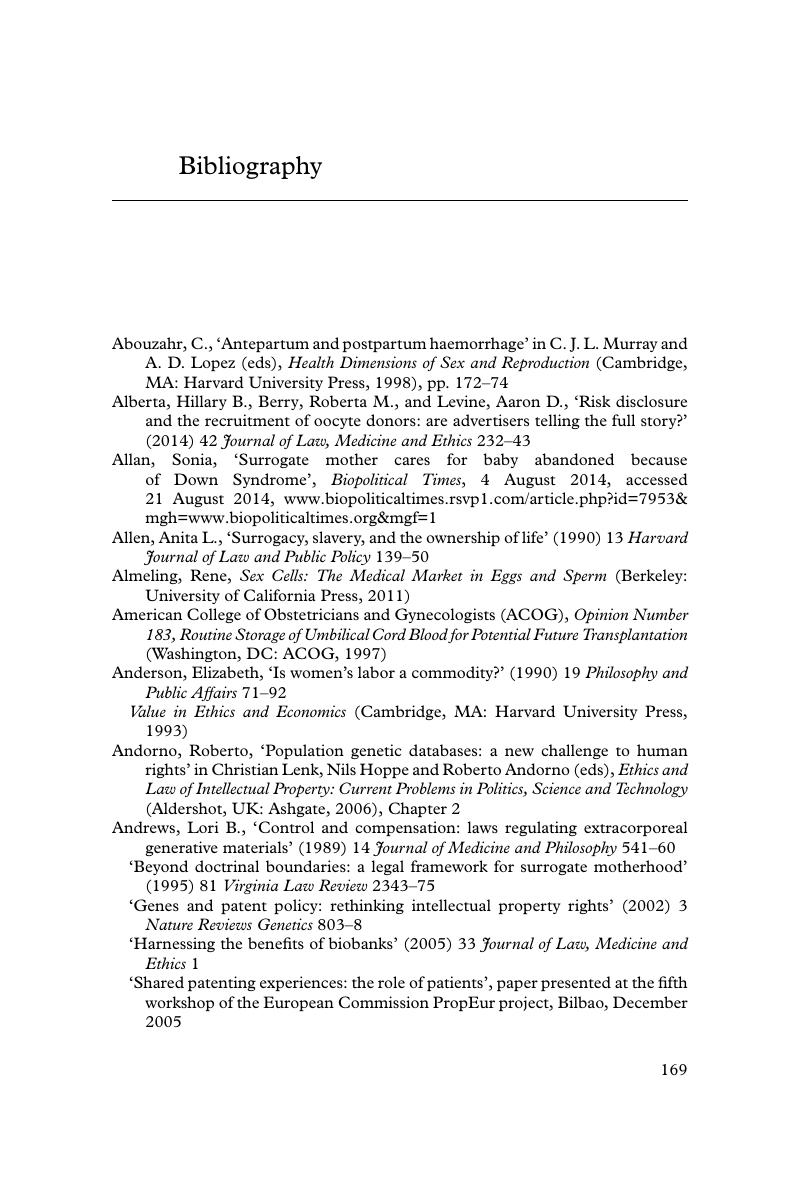Book contents
- Property in the Body
- Cambridge Bioethics and Law
- Property in the Body: Feminist Perspectives
- Copyright page
- Contents
- Preface to the Second Edition
- Preface to the First Edition
- Acknowledgements
- 1 Do We All Have Feminised Bodies Now?
- 2 Commodification, Contract and Labour
- 3 The Lady Vanishes: Eggs for Reproduction and Research
- 4 Surrogacy: Can Babies Be Property?
- 5 Umbilical Cord Blood Banks: Seizing Surplus Value
- 6 Biobanks and Databases: Our Bodies, but Not Ourselves
- 7 The Gender Politics of Genetic Patenting
- 8 Reclaiming the Biomedical Commons
- Bibliography
- Index
- References
Bibliography
Published online by Cambridge University Press: 24 May 2017
- Property in the Body
- Cambridge Bioethics and Law
- Property in the Body: Feminist Perspectives
- Copyright page
- Contents
- Preface to the Second Edition
- Preface to the First Edition
- Acknowledgements
- 1 Do We All Have Feminised Bodies Now?
- 2 Commodification, Contract and Labour
- 3 The Lady Vanishes: Eggs for Reproduction and Research
- 4 Surrogacy: Can Babies Be Property?
- 5 Umbilical Cord Blood Banks: Seizing Surplus Value
- 6 Biobanks and Databases: Our Bodies, but Not Ourselves
- 7 The Gender Politics of Genetic Patenting
- 8 Reclaiming the Biomedical Commons
- Bibliography
- Index
- References
Summary

- Type
- Chapter
- Information
- Property in the BodyFeminist Perspectives, pp. 169 - 196Publisher: Cambridge University PressPrint publication year: 2017



